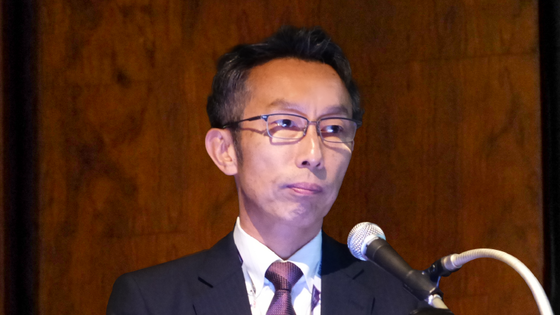From the multicenter TACTICS registry in Japan, about 60% of ACS patients who underwent OCT-guided primary PCI had plaque rupture, and patients with calcified nodules had poor 1-year clinical outcomes, according to Dr. Toshiro Shinke of Showa University, who presented at the Late-Breaking Clinical Science session at TCT 2022.
Impact of underlying causes of ACS assessed by OCT on clinical outcomes 1 year after PCI: The TACTICS Registry

The TACTICS registry enrolled 702 patients with ACS within 24 hours of onset who underwent OCT-guided primary PCI from November 2019 to April 2021 at 22 Japanese centers, and in 695 patients whose OCT assessment allowed identification of the lesion morphology of the responsible ACS lesion.
The mean age of patients was 66.2 years, 62.8% had ST-elevation MI, 28.3% non-ST-elevation MI, 8.8% unstable angina, and the responsible lesions were LM in 0.7%, LAD in 52.8%, LCX in 9.7% and RCA in 36.8%. Seven in-hospital deaths (1.0%) were observed.
In 695 patients, the cause of ACS was identified from OCT observations: 59% had plaque rupture, 26% had plaque erosion, 4% had calcified nodules, and the other 11% had significant stenosis (9.1%), 1.0% had coronary artery spasm, 0.4% had coronary atresia, 0.4% had emboli, and 0.1% had idiopathic coronary artery dissection.
There were differences in patient characteristics among the three groups of plaque rupture, plaque erosion, and calcified nodules, with a higher rate of ST-segment elevation MI in the plaque rupture group (72.7% vs. 59.6% vs. 57.1%: p=0.014) and higher current smoking in the plaque erosion group (34.8% vs. 43.3% vs. 14.3%: p= 0.007).
The calcified nodule group was older (66.5 vs 63.7 vs 75.0 years: p<0.001), had a lower proportion of men (80.8% vs 84.3% vs 64.3%: p=0.042), and had a higher incidence of Killip III/IV heart failure (7.3% vs 2.8% vs 21.4%: p=0.001), and dialysis (1.5% vs 2.2% vs 21.4%: p<0.001).
The calcified nodule group also had a higher percentage of type B2/C lesions (65.7% vs 58.5% vs 82.2%: p=0.032), preoperative SYNTAX scores (14.0 vs 13.0 vs 20.4: p<0.001) and postoperative SYNTAX scores (4.5 vs 3.0 vs 10.9: p<0. 001) were higher.
The 1-year MACE (cardiovascular death, MI, heart failure, or revascularization from ischemia) rates by Kaplan-Meier analysis were 12.4% in the plaque rupture group, 6.2% in the plaque erosion group, and 32.1% in the calcified nodule group, with the plaque erosion group as the reference, hazard ratio before adjustment was 2.2 (95% CI 1.15-4.22: p=0.018) in the plaque rupture group and 6.81 (95% CI 2.81-16.49: p<0.001) in the calcified nodule group.
A change in treatment strategy was observed in 58.1% based on OCT observations. Based on lesion morphology, 4.8% were treated stentless, and lesion preparation was performed in 5.6%. Based on the measured data, stent size was altered in 15.7%, stent length in 16.0%. And 3.0% underwent additional stenting and 54.6% underwent additional post dilatation.
Dr. Shinke concluded, "The underlying causes of ACS as defined by OCT can stratify future MACE risk in ACS patients undergoing primary PCI, and further studies are needed to clarify whether primary PCI can be optimized according to cause."
ご注意 当サイト内の全ての記事と動画の転載・転送はご遠慮ください。なお、法律上保護されたコンテンツの無許可の転載、複製、転用等は、当該コンテンツの権利者等から損害賠償請求その他の法的手続を申し立てられ、事案によっては処罰される可能性、また、故意にそれらを受け取った場合も同様の措置を受ける可能性がございます。ご不明な点がございましたら当社までご連絡ください。




